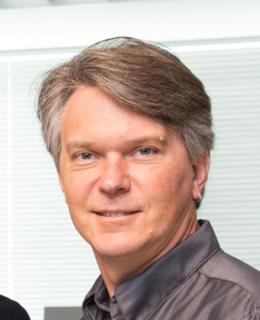
Prof. Jason Anderson
Positions
Professor
Faculty of Veterinary Medicine
Adjunct Professor
Full Member
McCaig Institute for Bone and Joint Health
Contact information
Web presence
Phone number
Office: +1 (403) 210-8661
Location
Office: HRIC3AC66
Preferred method of communication
Please contact via email.
Background
Educational Background
B.S. Geological Sciences, The University of Michigan, 1996
Doctor of Philosophy Biological Sciences (Vertebrate Paleontology), McGill University, 2001
Biography
Dr. Anderson obtained his BS in Geological Sciences at the University of Michigan. He received his PhD in vertebrate paleontology in 2001 from McGill University, and did postdoctoral work at the University of Toronto at Mississauga before joining the founding faculty of the College of Veterinary Medicine at Western University of Health Sciences in Pomona, California in July, 2003. In November of 2005 he joined the University of Calgary as part of the founding of the Faculty of Veterinary Medicine. He also holds an Adjunct position in the Department of Biological Sciences in the Faculty of Science.
Research
Areas of Research
The lab has done a lot of work on the origin of modern amphibians (frogs, salamanders, and caecilians) both through better characterizing the anatomy of the living animals as well as more fully documenting that of various potential fossil outgroups. We have active research on the fin-to-limb transition, focusing on the fossils from the early Carboniferous of Nova Scotia and Devonian of the front range of the Canadian Rocky Mountains in Alberta.
Utilizing CT and other imaging modalities we are focused on illuminating the hidden internal anatomy of the braincase, a critically understudied subject in fossils because previously this would require destructive techniques. The braincase also preserves phylogenetic information that is relatively isolated from natural selection's effects on the surrounding superficial skull bones.
We have used various techniques, including scanning electron microscopy, histology, and isotopic geochemistry, to explore life history events of fossil organisms preserved in their hard tissues. Leveraging our expertise in 3D modeling we have also recreated potential range of motion for various fossil animals.
Participation in university strategic initiatives
Courses
| Course number | Course title | Semester |
|---|---|---|
| VETM 320 | Veterinary Anatomy | |
| VETM 300 | Clinical Presentations I | |
| VETM 464 | Career Options and Field Experiences in Veterinary Medicine |
Awards
- UCVM Award for Research Excellence, Faculty of Veterinary Medicine, University of Calgary. 2017
- University of Calgary Teaching Award for Curriculum Development, University of Calgary (to the Faculty of Veterinary Medicine). 2014
- Professeur Invité, Le Museum National d’Histoire Naturelle, Paris. 2007
- Pfizer Award for Research Excellence, Western University of Health Sciences. 2005
Publications
Are you the profile owner?
Login to edit.
